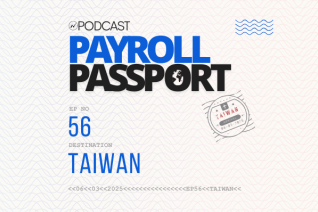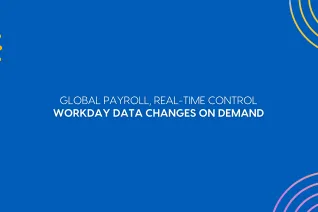Difference in doing payroll in larger vs. smaller headcount countries

Processing payroll is primarily about arriving at “net” from the “gross.” If that be the case, how different and how complex can doing the payroll in large headcount countries be from doing the same payroll in smaller headcount countries?
Headcounts of organizations vary significantly. Not always do we see a direct correlation between the revenue of an organization and the employee headcount. Many factors, including the industry, product/ services portfolio, competitive ecosystem, and the degree of modernization, influences the number of employees an organization employs. In a multinational organization’s operating construct, the spread and unpredictability of employee headcount are even starker. We mostly see a classic long-tail spread where the MNCs have a handful of countries with a majority of their employee population and smaller long-tail countries with much smaller employee populations.
There are several parameters a multinational organization should take into consideration before estimating the effort and complexity involved in deploying and managing payroll – in smaller and larger headcount countries.
1. Implementation challenges
Getting data from large headcount countries is challenging; it often does not come in the format required or desired. Many times, customers do not have systems where they can extract even previous year’s accurate data. In addition, transition/ transfer from an incumbent provider of payroll services to a new vendor is a challenge as organizations have a limited understanding of the outsourced payroll and depend on others.
Implementing solutions for smaller headcount countries, on the other hand, is plagued primarily with economies of scale. However, they also suffer from a lack of oversight, technological isolation, and under-investment – all of which result in residual complexity and inefficiencies.
2. Systems scalability
By its design, every system eventually reaches its threshold as the volume of employees scales, after which its performance starts to degrade gradually. As a result, many legacy payroll applications need modernization – like real-time computation, multi-core design, parallel computing, and adoption of smart design principles prevalent in other new-age enterprise applications.
Legacy system architecture and multi-country payroll is a lethal combination. What may seem to work for a small employee population soon reaches a tipping point when the system is subjected to a larger employee population.
3. Validation and checks
One cannot settle for anything lesser than 100% accuracy when it comes to payroll. So how do you get to that? Well, you introduce multiple tollgates, filters, and checkpoints. The “checker” processes introduced across the process flow consume time. Unless the process is genuinely designed to keep the Straight Through Processing (STP) in mind, the process eventually suffers from cumulative process delays as the headcount increases or the output quality endures.
4. Diluted visibility & control
The higher the volume and more distributed the employee population, the lower the control and visibility. Both process visibility and consequently control take a toll as a result. Therefore, the higher volume would mean lower visibility and control unless you have a completely integrated payroll ecosystem.
5. Operational overheads
The degree of investment in terms of time and effort required from the payroll supervisory and other process owners to ensure a timely, accurate, and compliant payroll is often underestimated. But, again, this is directly proportional to the employee count and spread.
6. Vendor coordination
Vendors (and sometimes in the context of global payroll vendor and vendor’s vendor, the in-country payroll partner) coordination can be taxing as the payroll volume grows. For example, furnishing missing payroll data, validating draft output, and coordinating employee queries across various stakeholders internally and externally can get complex. And the more moving parts, the messier the process will get as volume increases.
Yes, while payroll is primarily about gross-to-net, the differences in managing payroll in smaller headcount vs. larger headcount countries are acute! As organizations scale their headcount, it is essential to factor in the consequent increase in payroll complexity.
Latest Resources
Stay informed with latest updates
If you're curious and have a thirst for knowledge pertaining to the HR, payroll, and EOR universe, don't miss out on subscribing to our resources.














